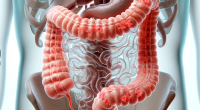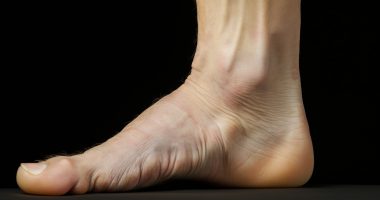Coronary artery disease (CAD)
What’s that?
Coronary artery disease (ischemic heart disease, coronary heart disease) is a functional and organic myocardial damage. The disease is caused by hypoxia (oxygen starvation) of the heart muscle, which occurs against the background of reduced or complete cessation of blood flow. Ischemia can be manifested by chronic (postinfarction cardiosclerosis, heart failure, angina pectoris) or acute (sudden coronary death, myocardial infarction, unstable angina) conditions. Clinical signs depend on the form of the disease.
About the disease
Coronary heart disease is hypoxic damage to the heart muscle (myocardium) that occurs due to the narrowing of the coronary arteries that feed it. Reduction in the lumen of the vessels is most often due to atherosclerosis – the formation of atherosclerotic plaques (cholesterol deposits) on their walls. This results in a gradual decrease in blood flow to the heart and a reduction in the nutrition of its area up to complete cessation.
This pathology, considered a disease of the elderly, has become rapidly “young.” Now, the diagnosis of atherosclerosis, which is one of the main prerequisites for the development of myocardial ischemia, is more and more often diagnosed in people aged 45-50 years.
Types of coronary artery disease
In the stable (non-acute) form of pathology, cardiologists use the clinical classification of coronary heart disease, which includes several types:
- Angina pectoris.
- The arrhythmic form, which is an acute disorder of heart rhythm. It most often occurs in the form of atrial fibrillation.
- Painless myocardial ischemia, that is a special form of CAD in which insufficient blood supply to the heart is not accompanied by pain syndrome.
- Focal postinfarction cardiosclerosis. It is the replacement of necrotized (dead) areas of the myocardium by scar tissue. The pathological process lasts 1-4 months after a person has suffered a heart attack.
- Ischemic cardiomyopathy – manifested by diffuse structural changes in the myocardium on the background of prolonged ischemia. The disease occurs in patients with a history of myocardial infarction.
- Large- and small-focal myocardial infarction – an acute form of ischemia in which there is a dying off of the area of heart muscle tissue (limited necrosis) against the background of complete closure of the lumen of the artery.
- Acute coronary death – is a sudden cardiac arrest occurring against a background of asymptomatic ischemia. The condition occurs suddenly and is not subject to control. There are two types of this pathology with successful resuscitation and fatal outcomes.
Angina pectoris is divided into several types:
- Stable (tension angina) – has existed for over a month without change.
- Vasospastic (Prinzmetal) – occurs due to sudden, unexpected spasm of the coronary artery on the background of load or rest).
- Microvascular – develops rarely in case of spasm in coronary capillaries.
- Progressive – with a steady increase in the severity of seizures.
- Newly diagnosed angina.
Symptoms of coronary heart disease
The most common complaint of a patient with CAD is pain in the sternal region spreading to the left side of the lower jaw, arm, or under the shoulder blade. It can be compressive, pressing, or burning. In most people, the pain syndrome is accompanied by panic and a sense of fear. Some patients complain of pain in the wrist joint and numbness in the upper extremity. Very rarely, the pain can go to the right arm.
Pain syndrome occurs after physical activity and is short-term, lasting no more than 5-15 minutes. After a person stops, sits, and calms down, the pain subsides, as acute ischemia causes are eliminated. As the disease progresses, sensitivity to load decreases; even minimal strain causes an attack. In myocardial infarction, the pain does not go away after resting and taking nitrates.
Other signs of coronary heart disease that do not appear in all patients are:
- sweating;
- severe fatigue;
- pallor of the skin;
- an increase or decrease in blood pressure;
- arrhythmia, rapid (less often slow) heartbeat;
- marked dyspnea accompanied by difficulty breathing.
Individual symptoms may occur one at a time or in a group, depending on the form of the disease.
Precursors of primary cardiac arrest in ischemia may include
- sensations of discomfort behind the sternum,
- psycho-emotional instability;
- fear of death.
Sudden coronary death is characterized by these symptoms:
- loss of consciousness;
- respiratory arrest;
- pupil dilation;
- absence of pulse on the carotid and femoral arteries;
- skin turning a pale grayish color.
If these signs appear, urgent resuscitation of the patient is required. Cases of primary cardiac arrest at the pre-hospital stage account for up to 60% of premature deaths due to ischemia.
Causes of coronary heart disease
In most cases, atherosclerosis is a prerequisite for the development of ischemia. Other causes include:
- thyroid disease;
- increase in the size of the heart against the background of hypertension and other diseases;
- sustained high or low blood pressure;
- increased blood clotting, increasing the risk of thrombosis.
Factors that increase the risks of developing CAD include:
- smoking;
- diabetes;
- arterial hypertension;
- overweight (obesity);
- elevated blood cholesterol;
- hypodynamia (lack of physical activity).
People over 50 years of age, mostly men, are at risk. The hereditary factor is also important.
Diagnosis of coronary heart disease
Diagnosis of CAD begins with the collection of complaints and anamnesis, followed by objective examination. The value of blood pressure, pulse rate, and the quality of cardiac and respiratory murmurs is essential. After that, the doctor prescribes a set of laboratory and instrumental studies to confirm or refute the presumed diagnosis.
Instrumental methods for diagnosing coronary heart disease include:
- Chest X-ray to assess the boundaries of the heart and identify areas of myocardial damage;
- Echo (ultrasound scan of the heart, valves, and large vessels) to detect blood flow abnormalities;
- ECG to assess the state and functional activity of the myocardium, heart rate, and electrical activity of the heart;
- Daily monitoring of blood pressure and Holter ECG monitor;
- Cardiac stress tests, etc.
Laboratory diagnostics includes general blood and urine analysis, several biochemical indicators (lipid spectrum, electrolytes, some enzymes), and a coagulogram. Endocrinologists, urologists, and other specialists are involved in the examination if necessary.
Treatment of coronary artery disease
Therapy for CAD can be conservative and surgical. Treatment tactics are chosen depending on the form of the disease.
Conservative treatment
In the early stages of ischemia, conservative treatment methods are used. Angina attacks are controlled by medications. The patient is prescribed drugs that relieve coronary spasms, maintain normal blood pressure, and reduce the load on the heart and blood cholesterol levels. Since coronary heart disease can cause concomitant pathologies of other systems and organs, the course of treatment, if indicated, includes drugs that improve their functioning.
Non-medicinal methods of treatment include therapeutic exercise. It is actively used after the acute manifestations of CAD to strengthen the heart muscle.
Surgical treatment
If conservative therapy does not show results, surgical treatment is prescribed. The most common surgical option is angioplasty, followed by stenting. In the process, a catheter with a mini-balloon is inserted into the site of the narrowing of the coronary artery. It restores the normal diameter of the vessel, after which a hollow frame – a stent – is placed in this place, which prevents further narrowing. Sometimes, this intervention does not give the expected result. In this case, coronary bypass surgery is performed. The operation consists of removing the affected part of the artery and installing a shunt (vascular graft).
All these surgical procedures are performed in more than 850 hospitals worldwide (https://doctor.global/results/diseases/coronary-artery-disease-cad). For example, Coronary artery bypass graft (CABG) is done in 26 clinics across Turkey for an approximate price of $14.7K (https://doctor.global/results/asia/turkey/all-cities/all-specializations/procedures/coronary-artery-bypass-graft-cabg).
Prevention of coronary heart disease
All prevention measures are divided into two groups:
- primary, aimed at correcting the diet, avoidance of bad habits, and selection of a correct physical activity regimen;
- secondary, narrowly focused, consists of regular preventive examinations and consultations with specialists, taking prescribed medications according to the specified scheme.
Rehabilitation
After a myocardial infarction or heart surgery, rehabilitation is carried out in 3 stages.
- Inpatient. Patients are under 24-hour supervision of specialists. If indicated, they may undergo bypass/stenting.
- Sanatorium-resort treatment.
- Outpatient dynamic monitoring.
The third stage of rehabilitation is the most important. The rules of behavior during this period are prescribed to each patient by the doctor at discharge. All appointments depend on the type and volume of the surgery.



